If you’re the parent of a tween, you’ve undoubtedly heard of the popular social media app TikTok, a video-sharing platform where users can watch, create and share self-made videos shot on cell phones.
As technology continues to evolve, it can be a challenge to keep up. Questions of online safety and data privacy concerns are top of mind for many parents, which begs the question, is TikTok safe for kids?
Given the app’s increasing rise in popularity — and media attention for unlawful data collection and alleged privacy concerns — it’s important to understand what exactly your child is consuming as well as what information is being shared about them online. Here’s what you need to know when it comes to your child’s safety on TikTok.
Table of Contents
- What is TikTok?
- Is Tiktok Safe for Kids?
- Risks to Consider
- TikTok Safety Features for Teens
- TikTok Parental Controls
- Kid-Friendly TikTok Alternatives
- TikTok FAQ
What Is TikTok?
TikTok is a video-sharing platform where users can watch, create and share videos shot on cell phones. The content found on TikTok runs the gamut from lip-syncing and comedic dancing to educational videos on topics like health or politics.
The app provides an interactive world of video-based content where users can connect with each other. But as the TikTok craze continues to spread worldwide, many parents wonder about the safety implications of the app their kids can’t get enough of, particularly if their kids are on the younger side.
TikTok’s official age requirement is 13 years old. Users between the age of 13 and 15 have their account set to private by default, which prohibits them from private messaging and only allows friends to comment on their videos. Only users over the age of 16 can record live videos or use the private messaging feature.
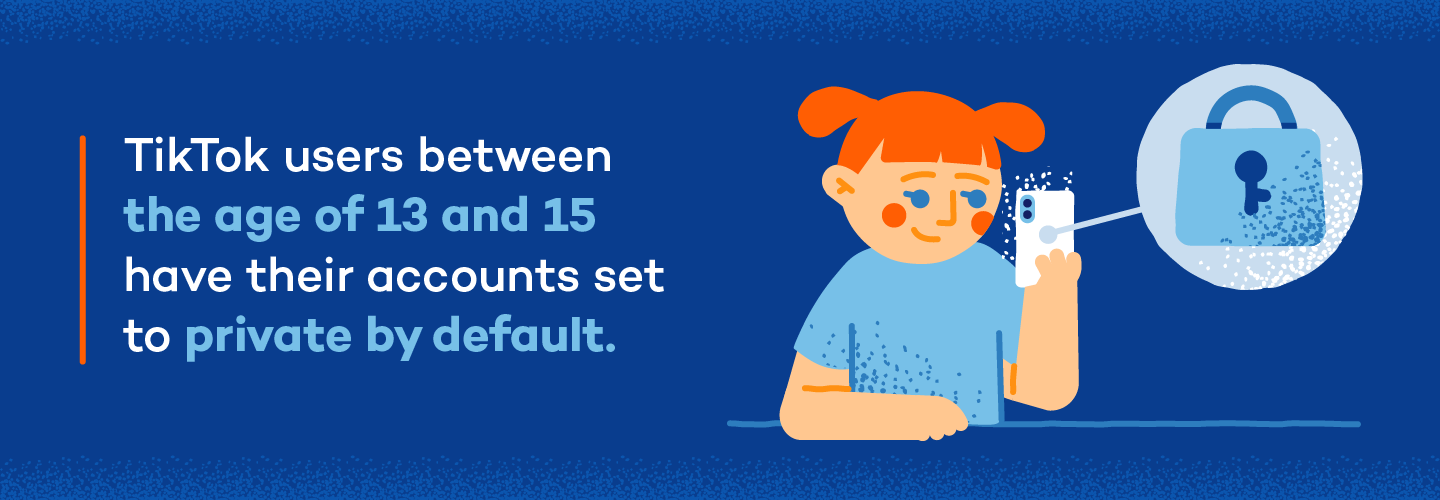
The community associated with the world of TikTok makes it particularly interactive and engaging for users. In addition to creating their own videos, users can follow other creators on the app and engage with their creations through likes, comments, and messages.
Although TikTok has become an entertaining and engaging pastime for many, every social media app comes with some level of risk when it comes to online safety and data privacy. While the majority of content is harmless, there are still some areas of caution to be aware of.
Is TikTok Safe for Kids?
TikTok features mature user content that may require parental guidance for young kids or teenagers under 16. However, there are youth safety features like TikTok for Younger Users under 13 years old and parent control guides that can make TikTok safer and age-appropriate for kids.
TikTok enforces automatic parental controls for children 13-15 years old that restrict their access to certain features like private messaging, video commenting or TikTok’s profile suggestions to users they may know.
TikTok has also taken its privacy settings a step further for teens ages 16-17, allowing users to turn off push notifications after 10 p.m., set direct messaging to “No One” (which they can change anytime), choose who can download their videos and more.
Here is an overview of TikTok restrictions and safety features for children 13-17 years old:
- For kids under 13 years old, TikTok:
-
- Offers TikTok for Younger Users, a limited app experience that allows TikTok to add users to age-appropriate environments online that follow Federal Trade Commission (FTC) guidelines
- Restricts sharing of personal information
- Restricts video sharing, commenting, user messaging or maintaining followers
- Allows parents to block the app in a child’s device via Google Play or Apple App Store and implement parental controls
- For kids 13-15 years old, TikTok:
-
- Restricts private messaging, including sharing videos and images
- Automatically sets accounts to private
- Limits content sharing to only friends and followers instead of “Everyone”
- Permanently turns off content downloads from other users
- Turns off notification alerts after 9 p.m. (users can still check their notifications; they just won’t be alerted)
- Turns off Duet (side-by-side video posting) and Stitch (adding specific parts from another user’s video into your own) app features
- Asks users to select who can watch when they post their first video
- For kids 16-17 years old, TikTok:
-
- Automatically defaults direct messaging to “No One” (teens must manually switch this setting to send and receive messaging online)
- Sends prompt to confirm privacy settings when users send their first DM
- Sends request to confirm who can download their videos
- Turns off notification alerts after 10 p.m. (users can still check their notifications; they just won’t be alerted)
Although TikTok tries to manage its safety controls for kids, there are ways around these restrictions, like kids registering for a new account under a different name and age. It’s essential to monitor your child’s activity and consider the risks below before letting your child use TikTok.
Risks to Consider
If your child uses TikTok and you’re worried about what exactly they’re getting into, you aren’t alone. Educating yourself on the potential safety issues associated with TikTok can help you determine whether or not you’re comfortable with your child using it. Here are the main risks to know about the app.
Exposure to Inappropriate Content
TikTok is split into two main feed sections. The “Following” feed only displays videos created by the users you follow. The “For You” feed curates a stream of suggested videos based on your account activity and the type of content you typically watch.
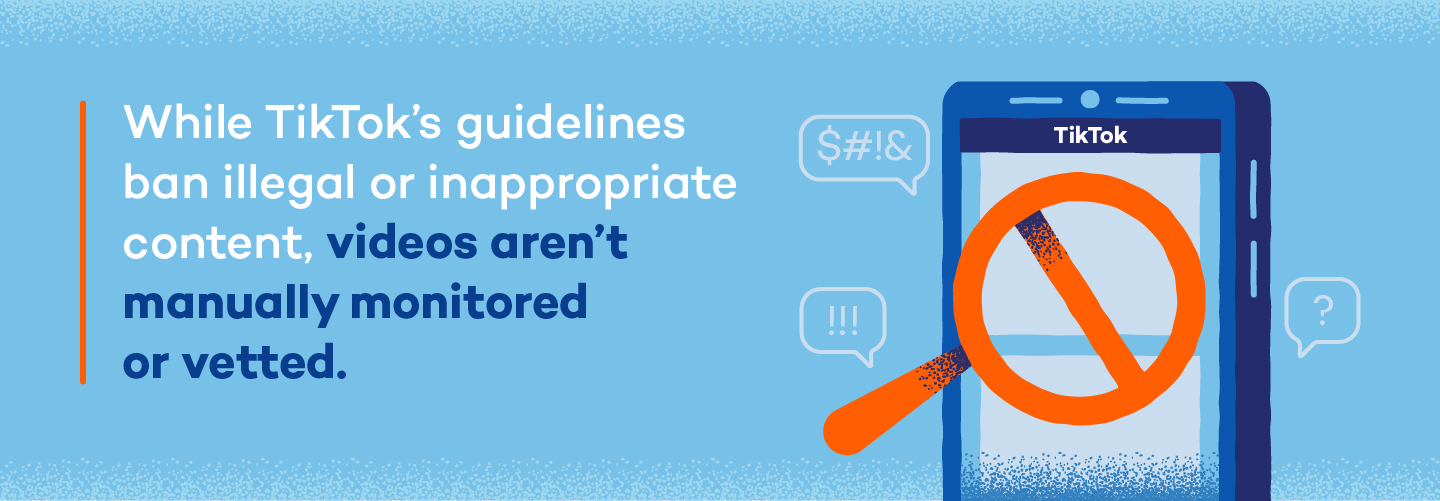
Things can get problematic when it comes to the For You feed, which could end up surfacing videos containing inappropriate content — whether it’s sexually explicit, profane or physically dangerous.
While TikTok’s guidelines bar users from sharing illegal or inappropriate content within the app, videos aren’t manually monitored and vetted. Instead, digital algorithms are used to filter out content that violates TikTok’s guidelines. This means that some inappropriate content will inevitably slip through the cracks and make its way onto users’ screens.
Contact With Strangers
With over 1.2 billion people using TikTok as of 2023, the potential for communicating with strangers runs high. Accounts created by those over the age of 16 are set to public by default, meaning their account activity is visible to anyone.
This means they can communicate with anyone and everyone they encounter on the app, including strangers. While accounts made by kids between the ages of 13 and 15 are set to private by default, this restriction can easily be bypassed by entering a false birth date when registering for an account.
Having a public account means more than just having your profile and videos visible to anyone on and off TikTok. It also allows your account to be suggested to other users within the app, enables anyone to comment on your videos and allows your videos to be downloaded by other users. While these settings can be adjusted to allow for more privacy, the possibility of contact with strangers will always exist.
Cyberbullying
You’re likely aware that social media and cyberbullying go hand in hand, and TikTok is no exception. Whether it’s strangers sharing their harmful opinions or even comments from friends your child knows in real life, TikTok — like every other social media platform — provides a fertile ground for cyberbullying to take root.
A major form of cyberbullying that’s occurred increasingly within TikTok is body shaming. Famous TikTok users have spoken up about their personal experiences being body shamed in the comment section of their videos and dealing with an endless slew of harmful comments about their body shape and size. This can have far-reaching effects on younger users who are still developing mentally and physically, potentially leading to feelings of worthlessness and humiliation.
Data Privacy
A common concern with any social media platform is the question of how your data is being used. The important thing to realize is that while we tend to think of social media platforms as free, they technically aren’t. They’re paid for by advertisers in exchange for companies like TikTok to show their ads to users on the app.
In order for those ads to be successful and reach their ideal target audience, they need data about those people. That’s how TikTok (and many other social media platforms) makes money: by selling user data to advertisers.

With this in mind, parents should understand what data is being collected on their kids and how it’s being used. TikTok gathers your country location, internet address and the type of device you’re using. With your permission, it can also have your exact location, phone contacts and activity on other social media channels. In addition to your age and phone number, TikTok also has access to any private messages sent within the app.
Mental Health
Is TikTok safe for kids and their mental health? You should consider TikTok’s impact on your child’s psychological well-being before allowing them to use it. Factors like body shaming, unrealistic beauty standards and addictive scrolling may impact your child’s emotional well-being, self-confidence and identity.
The endless scrolling nature of TikTok may also affect your child’s sleep patterns and long-term ability to focus. Openly communicate with your kids about internet safety and expectations and set up boundaries like time limits or content blocks to lower these risks.
TikTok Safety Policies and Features for Teens
TikTok promotes community safety by implementing strategies and tools that prioritize age-appropriate experiences for young users. TikTok supports community safety by monitoring or banning user accounts that violate its safety policies or may have been created using false information.
Encouraging Age-Appropriate Activities
TikTok has a rating of 12+ in their app store, meaning parents can use device-level controls to prevent their children from downloading the app or redirect kids to TikTok for Younger Users, which has fewer features and automated safety measures for users under 13 years old.
Removing Underage Accounts
TikTok has a safety moderation team trained to spot clues that suggest a child under 13 may be using an account. They monitor data, track keywords and use reporting methods to find and immediately suspend the account if it may be associated with a minor.
Being More Transparent
In addition to offering transparency reports on the number of accounts deleted for breaking community safety regulations, TikTok will soon start offering reports on the number of underage accounts deleted.
Promoting Protective Community Guidelines
TikTok promotes teen safety by upholding a set of community guidelines built around four pillars:
- Eliminating offensive material that violates TikTok policies
- Limiting the audience for mature content to those over 18
- Maintaining the age-appropriateness of the suggested content on the “For You” page
- Providing the community with tools to engage in safe online browsing
TikTok Parental Controls
If you want to ensure your child uses TikTok safely, there are several steps you can take. TikTok has a variety of privacy control settings that you can set up from your child’s account that can provide a safer experience on the app. Read on for an overview of what safety settings you can manage in TikTok, along with some additional safety precautions you can take to implement parental controls and make sure your child is staying safe online.
Use Family Pairing
Family Pairing Mode is a recent addition to the available privacy control measures you can manage on TikTok. Both the parent and child must have their own separate TikTok accounts in order to enable it.
Once enabled, parents can link their account to their child’s and have control of important privacy settings from their own device. (Previously, parents had to adjust privacy settings within the app on their child’s device.) It’s also password-protected, so unless your child guesses your passcode, they can’t go in and reverse the settings you put in place.
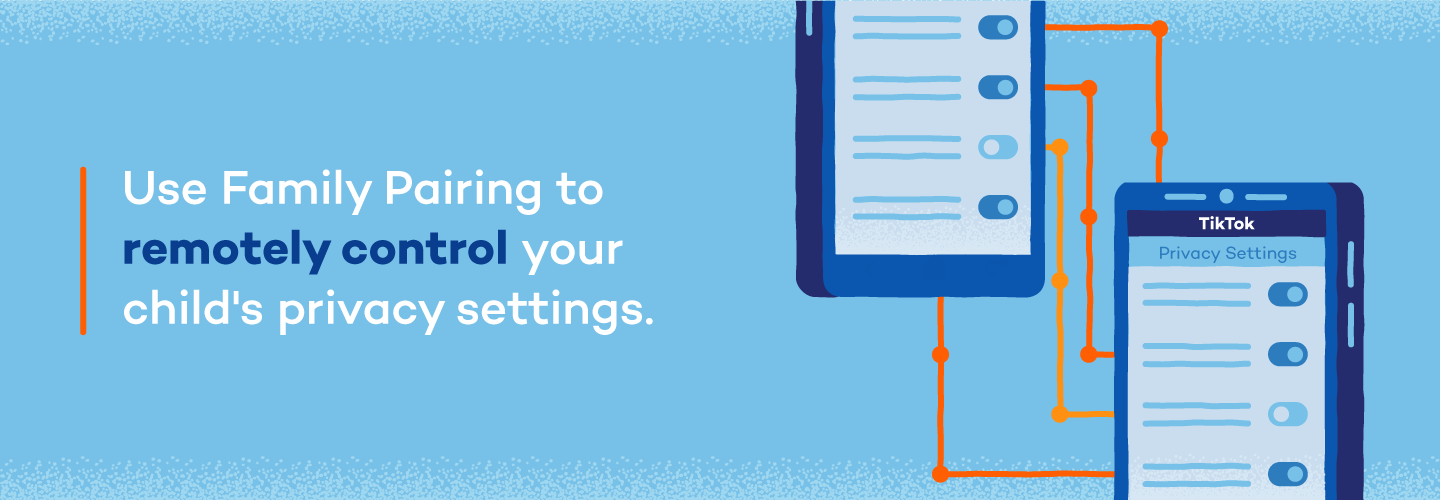
Family Pairing enables parents to manage screen time, direct messaging settings and the type of content their child can see on the app. To set up Family Pairing, download the TikTok app on your phone and create an account. You’ll also need your child’s phone and their TikTok account logged in and open. Here’s what to do from there:
- Tap the three dots next to your user profile, then scroll down to Digital Wellbeing.
- Tap Family Pairing and select whether the phone you’re using belongs to you or your child.
- A QR code will be displayed on your phone. To link your accounts, your child must scan the QR code.
- You can now access and manage the security features of your child’s account.
Here’s some additional information on what exactly you can control with Family Pairing:
- Screen time management: You can adjust how long your child is allowed to spend on TikTok per day.
- Screen time dashboard: You can receive a summary report detailing how many times your child opens TikTok and time spent on the app.
- Direct messages: You can restrict who can send messages to your child’s account (Everyone or Friends only), or turn off direct messaging completely. Direct messaging is automatically disabled for users between the ages of 13 and 15.
- Filter video keywords: You can choose which hashtags or keywords to hide from your teen’s Following and For You feeds.
- STEM feed: You can approve your child’s access to TikTok’s STEM feed for science, technology, engineering and mathematics content.
- Discoverability: You can control who can discover and follow your child by making their account public or private.
- Restricted mode: This setting automatically filters out content from your child’s feed that may not be appropriate for young audiences.
- Liked videos: You can adjust who can view the videos your child has liked (Everyone or Friends only).
- Comments: You can control who can comment on your child’s videos (Everyone, Friends only or no one).
- Suggest account to others: Control whether your child’s account can be recommended to others or not.
Learn how to set up Family Pairing by following this quick guide
If your child manages to disable the Family Pairing setting, you will receive a notification on your phone to let you know.
For more information, discover TikTok user safety support.
Control Screen Time
You can set limits on how much time your child spends on TikTok. While you can manage this setting using the Family Pairing feature, you don’t have to set up Family Pairing to adjust it. Keep in mind that without Family Pairing activated, you’ll need to manage this setting from your child’s device. Here’s how to adjust your child’s screen time settings:
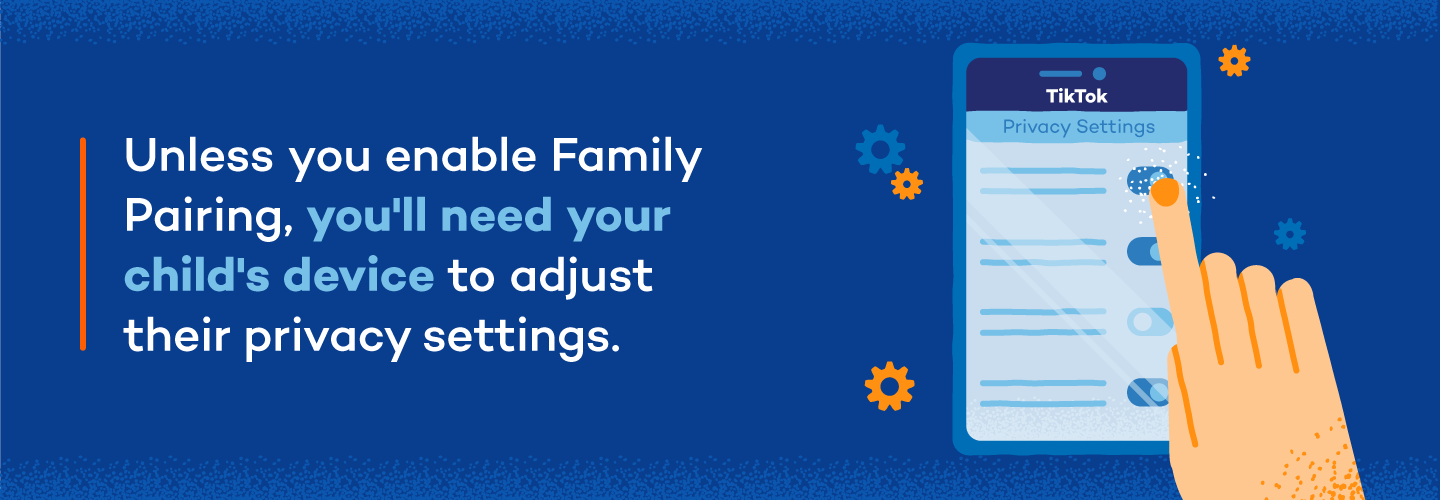
- From your child’s device, open the TikTok app.
- Go to profile, then tap the three dots button to open the menu .
- Click Settings and Privacy.
- Click screen time.
- Tap daily screen time.
- Set your desired time limits
- Choose and confirm a passcode.
To turn Screen Time Management off, simply repeat steps one through four, then choose “Turn off Screen Time Management.”
Direct Messages
You can limit who can send direct messages to your child’s account, or turn off direct messaging completely. If you don’t have Family Pairing activated, you can still control this setting — you’ll just have to adjust it directly from your child’s device. Here’s how to manage this setting:
- From your child’s device, open the TikTok app.
- Go to profile, then tap the three dots button to open the menu.
- Scroll down to Settings and Privacy .
- Tap Direct Messages.
- Select who can send you messages.
- Choose “Everyone, Friends, or No One.”
Activate Restricted Mode
Restricted Mode allows you to prohibit inappropriate content from displaying on your child’s TikTok feed. While you can manage this setting using the Family Pairing feature described above, you don’t have to set up Family Pairing to adjust it. Keep in mind that without Family Pairing activated, you’ll need to manage this setting from your child’s device. Here’s how to activate Restricted Mode:
- From your child’s device, open the TikTok app.
- Go to profile, then tap the three dots button to open the menu.
- Click Settings and Privacy.
- Click Content Preferences.
- Select Restricted Mode.
- Choose Turn on Restricted Mode.
- Choose and confirm your passcode.
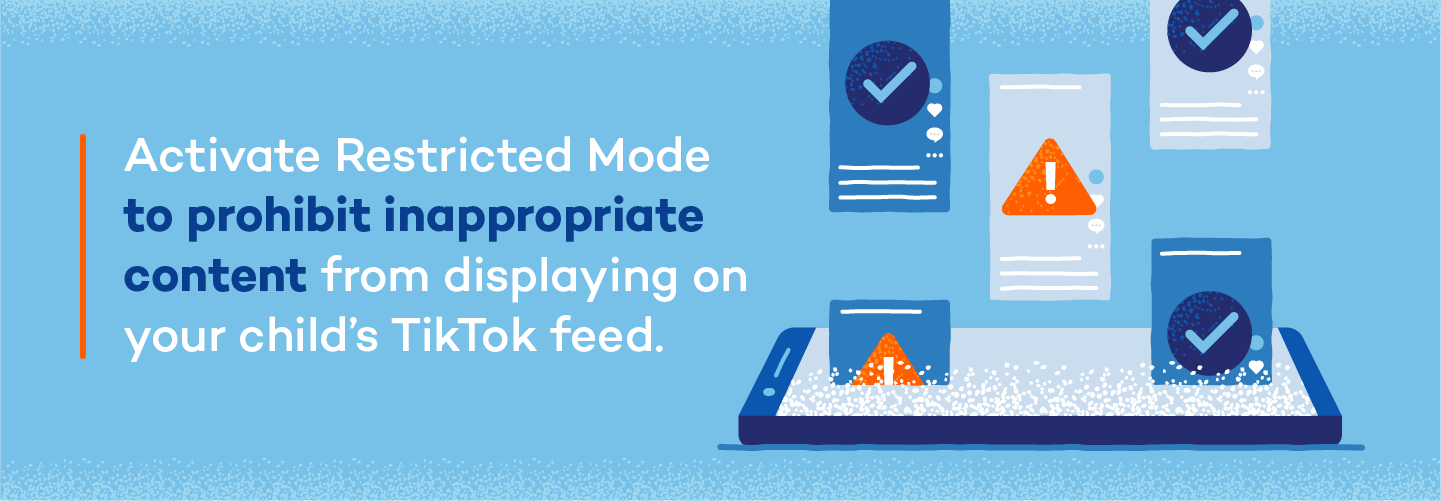
To turn Restricted Mode off, simply repeat steps one through four, then choose “Turn off Restricted Mode.”
Manage Interactions
There are many additional privacy settings you can adjust to increase your child’s safety while using the app. You’ll have to adjust them from your child’s device, but you can make them passcode-protected to avoid your child interfering with the controls you put in place.
To access additional privacy settings, open TikTok on your child’s device. Go to their profile, then tap the three dots button to open settings. Scroll down to Privacy and Safety, then navigate to the following sections to access more settings:
Under Discoverability:
- If you want your child’s account to be private, toggle Private Account to on.
- To keep your child’s account from being suggested to other users, toggle Suggest Your Account to Others off.
Under Personalization and Data:
- To limit the amount of data TikTok collects from your child’s account, toggle Personalized Ads off.
Under Safety:
- Toggle Allow Your Videos to Be Downloaded off.
- Turn Who Can Send You Direct Messages to no one.
- Turn Who Can React to Your Videos to no one.
- Set Who Can View Your Liked Photos to Only me.
- Turn Who Can Comment on Your Videos to no one.
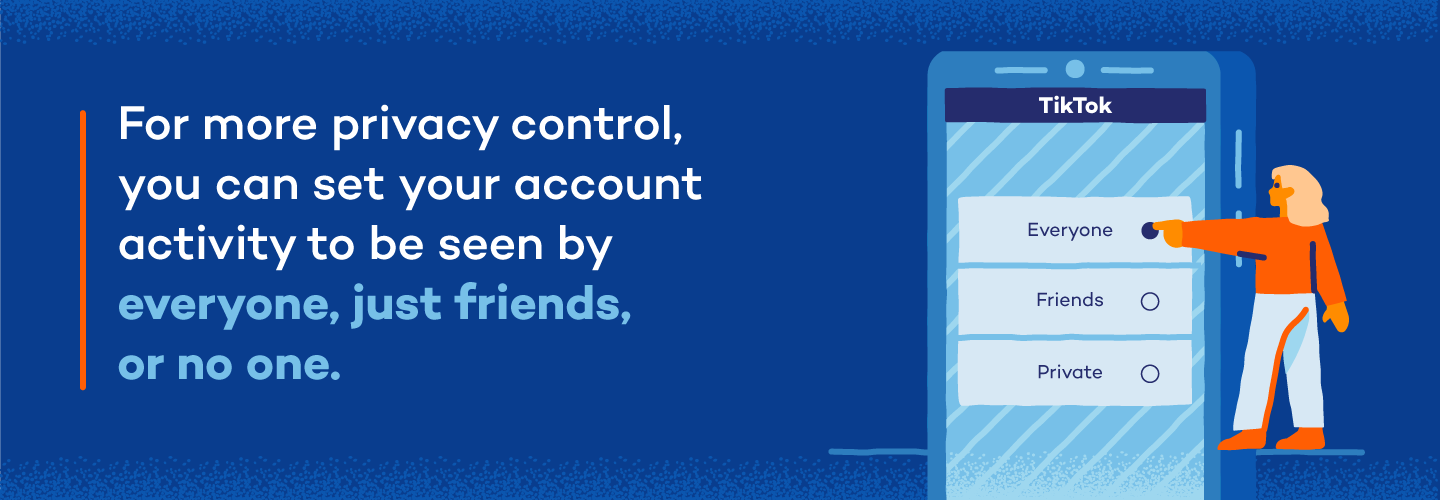
Keep in mind you’ll have the option to set these features to Everyone, Friends or no one. Choosing the “no one” setting provides the highest level of privacy and security. If you choose the Friends setting, it’s a good idea to continually monitor who your child adds to their friends list going forward.
Discuss Internet Safety with Your Kids
For all the ways safety measures you can take to protect your children, there’s always the possibility of something slipping through the cracks. Not only that, but kids may also try to sidestep parents’ digital boundaries and find ways to get around them. That’s why taking time to teach your kids about online safety might be one of the most impactful safety measures you can take as a parent.
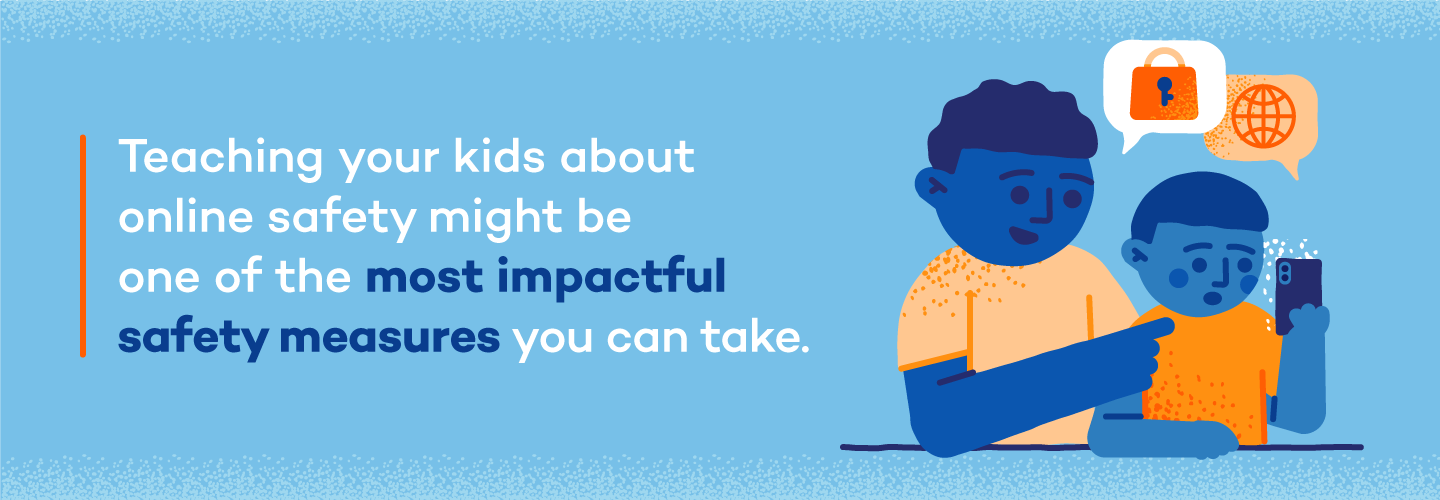 By teaching your children why certain boundaries are put into place and helping them understand the severity of certain dangers that lurk online, they’ll be more equipped to manage their own social media experiences.
By teaching your children why certain boundaries are put into place and helping them understand the severity of certain dangers that lurk online, they’ll be more equipped to manage their own social media experiences.
Kid-Friendly TikTok Alternatives
Even after learning about the safety measures TikTok provides to make sure your child uses the app safely, you might still prefer if they didn’t use it at all. If this is the case, check out these safer alternatives to TikTok that your child can enjoy in place of TikTok.
Grom Social
Grom Social is a social media entertainment site for children ages 4-15. Children can use the app to meet and connect with other kids online, make videos, share posts, chat and make new friends. Grom Social has strict safety features such as screening for inappropriate language and parental controls to monitor your child’s activity. It also requires parental approval before your child can create an account.
Funimate
Funimate lets users create a variety of videos: slow-motion, compilation videos, looped videos and a lot more. The app’s large music library allows you to include countless popular songs and sound effects in your videos, and you can also add text and stickers to your videos. Funimate features over 20 video effects to make creations pop and let users showcase their creativity.
Triller
Triller is a safer alternative to TikTok that lets you record videos and share them on other social media accounts like Twitter, Instagram or Facebook. The simplicity of the app is what attracts most users, including celebrities like Kevin Hart and Selena Gomez. All you have to do is record your footage, and Triller’s auto-editing tool does the rest of the work. Users can edit their videos further with editing tools provided in the app, and can use a variety of filters or even draw on the videos for another level of creativity and personalization.
H3: Zigazoo Kids
Zigazoo Kids is a TikTok-like app made for children under 13. This app lets users create videos of themselves dancing, acting, telling jokes and doing other artistic things, then share their videos or participate in challenges. Zigazoo Kids is rated 100% kid-safe in the Google Play and Apple Store and fosters a fun, positive and appropriate environment for kids to express themselves.
TikTok FAQ
If you have more questions about how TikTok works for you and your family, we’ve covered some commonly asked questions below.
What Are the TikTok Age Requirements?
TikTok has a 12+ rating in the app store, meaning users 13 years and older are permitted to use the app. It is important to know that TikTok has no age verification tools and only requests your date of birth when signing up.
Is TikTok Appropriate for Children?
Parental guidance is recommended on TikTok for teens 13-17 years old due to the app’s mature content. However, there are safety features and parental controls you can implement to monitor your child’s activity on TikTok and create a safer online experience.
Is There a Kids TikTok?
TikTok provides TikTok for Younger Users, a simplified app experience with extra safety and privacy features for children under the age of 13. Users are limited to what they can share, view and access online.
Is It Safe to Post Your Kids on TikTok?
To ensure the safety of your children and their personal information, it may not be safe to post your kids on TikTok. Cybercriminals can use the information you share online, including your kids’ names, birthdates, birth locations and more, to steal their identity for fraudulent purposes or to access private data.
How Can I Make TikTok Safe for My Child?
Monitor your child’s online activity when using TikTok and educate yourself on the app’s safety features and parental controls. By understanding how to restrict access to certain content or limit the time your child spends on the app, you can make TikTok safer for your child and household.
Can I Share a TikTok Account With My Kids?
TikTok offers the parental control Family Pairing, which allows you to monitor, manage and share a TikTok account with your kids by linking your accounts together.
How Do I Make a TikTok Account Private?
To make your TikTok account public or private:
- Select Profile from the bottom of the TikTok app.
- Press the upper Menu ☰ button.
- Select Privacy from the Settings menu.
- Turn the private account on or off.
How Do I Set Up Family Pairing?
To set up Family Pairing:
- Select Profile from the bottom menu.
- Press and hold the upper Menu button.
- Select Settings and Privacy, then select “Family Pairing.
- Tap Teen or Parent.
- To link accounts, follow the instructions in the app.
Does TikTok Collect Your Data?
TikTok collects your data for advertising and marketing purposes. TikTok has invested more than $1.5 billion into its Oracle Cloud platform, which holds and secures all your data in one server from foreign cyberattacks and hackers.
Keep Your Family Protected With Panda Security
As a parent, it can be difficult to stay ahead of fast-paced social apps like TikTok and determine if TikTok is safe for your kids. Knowing what privacy settings you can control and setting boundaries with your children is a great way to keep your child protected from online threats, including keeping malware and data breaches at bay.
Ensure your whole family stays protected by maintaining antivirus software on all of your connected devices and decrease the chances of you or your child becoming a victim of cybersecurity threats.





